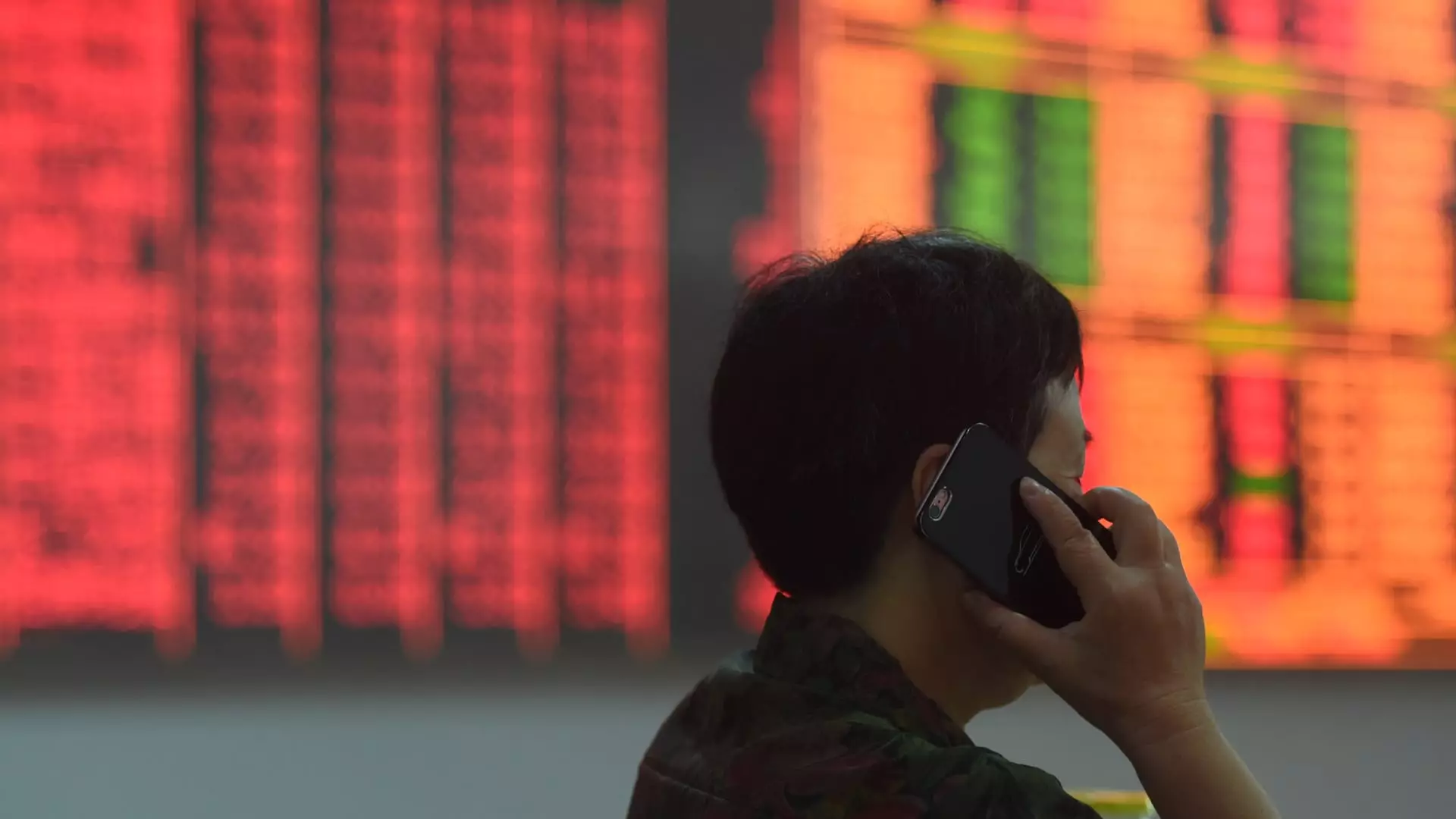The economic landscape in China has become increasingly complex, revealing a nation grappling with a series of systemic issues that extend beyond superficial market alerts. Recent moves by the Chinese government, led by President Xi Jinping, reflect a deeper sense of urgency concerning the continuing slump of the real estate sector and its broader implications on economic growth. The Shanghai Composite Index’s remarkable rally to a three-month high, coinciding with an extraordinary meeting of the Politburo, emphasizes the prevailing fragility of the Chinese economy despite governmental reassurances.
China’s recent policy announcements are designed to provide a sense of reassurance to both the market and its citizens, but they are more indicative of a reactive approach rather than a proactive strategy. After years of stringent regulations targeting various sectors, including real estate and gaming, the government is now signaling a shift in strategy that aims to stabilize the economy. Analysts argue that this “shock and awe” approach, though intended to uplift market sentiment, may not lead to substantial, long-term improvements without a well-defined plan to address ingrained economic problems.
According to Ting Lu, chief economist at Nomura, the solutions released thus far appear to lack the specificity required to achieve meaningful results. While acknowledging the importance of recent monetary easing, he notes that without a thorough understanding of the root causes of the economic malaise, these measures are unlikely to produce the desired effects. The slowing growth rate of the world’s second-largest economy, exacerbated by prolonged declines in the real estate sector, underscores the urgency for coherent policies that extend beyond stopgap measures.
The downward spiral of the real estate market is particularly concerning, as it represents one of China’s most significant economic challenges. This sector has faced four consecutive years of contraction, putting severe pressure on associated industries and speeding up a downturn in retail sales. Current growth in this area hovers slightly above 2%, a figure that raises alarms about consumer confidence and future spending capacity.
Despite recent cuts to interest rates aimed at stimulating the economy, financial experts maintain that the impact has been limited. Paul Christopher from Wells Fargo Investment Institute highlights that even as borrowing costs dwindle, consumer wariness continues to inhibit market recovery. With property developers facing ongoing scrutiny from regulators, investors remain uncertain about the stability and viability of their investments.
Investor behavior reflects this broader uncertainty. Indeed, although the CSI 300 stock index has seen a remarkable surge, resulting in its best week since 2008, a significant portion of this rally can be attributed to external factors rather than domestic policy changes. The Federal Reserve’s recent decision to ease monetary policy has technical implications for China’s financial market, but it remains unclear whether this will translate into sustained growth.
Bruce Liu, CEO of Esoterica Capital, has voiced caution, pointing out that the genuine support for capital markets isn’t yet operationalized. The vocal optimism from investors such as billionaire David Tepper indicates a short-term speculative interest but fails to address long-term investment fundamentals.
As hedge funds and global investment institutions pile into Chinese equities, this selective lifting of sentiment is juxtaposed against a backdrop of consumer pessimism and business caution. A recent survey by the China Beige Book, encompassing over 1,200 businesses, indicates that corporate borrowing has decreased, nullifying the potential benefits of lowered rates.
The Chinese government’s policy-making must evolve beyond signaling immediate relief; it should now aim for coherent actions that effectively tackle the multifaceted issues plaguing its economy. Although the promise of fiscal stimulus and rate cuts may generate short-term optimism in the markets, without robust structural reforms, these measures risk becoming a mere placation for a restless populace.
Moving forward, the focus should be on instilling confidence across both consumer and investor bases while also rectifying the perceptions surrounding the effectiveness of the financial sector. As the global economic landscape shifts, China must navigate these challenges with a balanced approach—promising growth through innovation and openness against a backdrop of regulatory prudence.
The current trajectory for China involves a delicate balancing act where government interventions need to transition from reactive measures to detailed and strategic frameworks for economic revitalization. Only then will the nation’s economy be equipped to address the crises it currently faces and lay a sustainable foundation for future growth.

